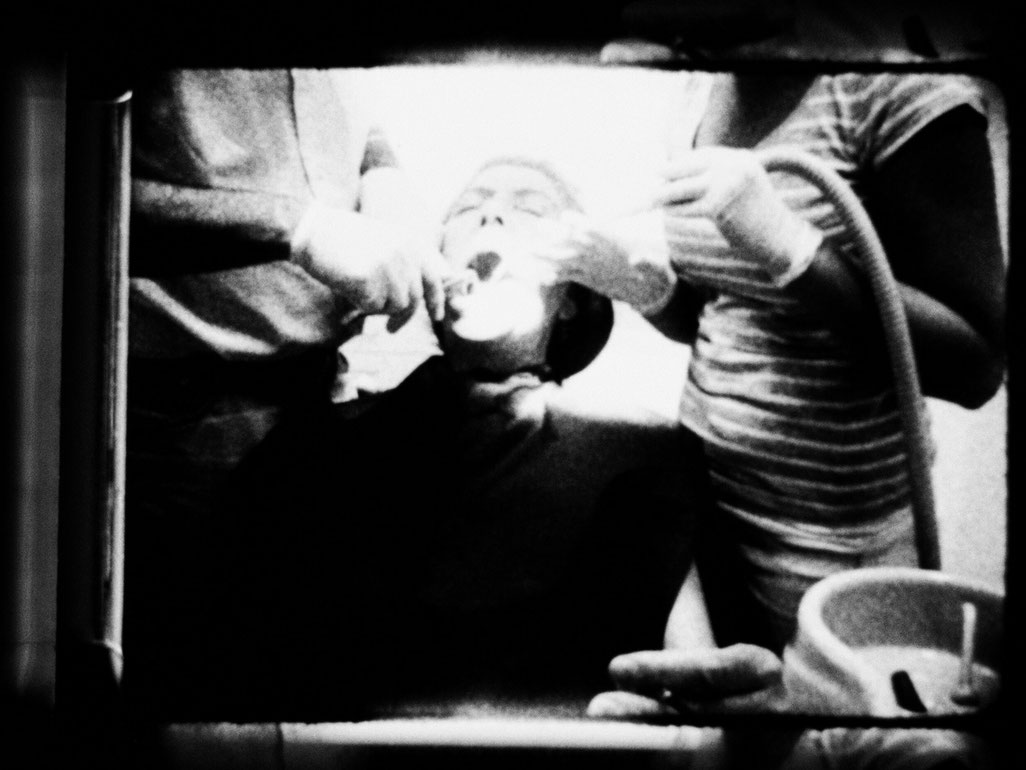Why Life Is Worth Living
The film virtually opens with a false lead, showing a poster for for Shiseido cosmetics – the kind of sign we are accustomed to seeing in display windows of perfume shops or department stores. The upper portion of the poster is painted over with the title of the film and the lower with the name of the filmmaker. The poster shows the beautiful and complacent face of a woman, at its center her large Asian eyes, a deep and trusting gaze. A hand reaches into the image – probably that of a man – trailing a long transparent strip across the poster.
Friedl vom Gröller juxtaposes this scene with its inversion in the next. The face of a woman is again central; this time it is she herself. But her head is leaning back and her eyes are closed, sometimes twitching. Vom Gröller is seated in a dentist’s chair. She is undergoing a treatment that involves several phases and is composed in an escalating rhythm. She is placed under examination, she receives anesthesia, and teeth are pulled. Rather than her eyes it is her mouth that initially serves as the open organ at the center of the image, appearing unreal under the dentist’s light. Around this center swirl the arms and hands of the dentist and his assistant employing dental instruments and hoses.
In the lower part of the foreground we see Friedl vom Gröller’s hand operating the camera using a remote she herself uses to control the shutter, with a ring on her ring finger. Later she even waves with her left hand while she is being operated upon. In-camera editing slows down and repeats operations that are thereby intensified, like in a dream or ritual. Why Life Is Worth Living is a question and an answer at one and the same time: Why is it really worth it? Why do we suffer pain? Perhaps to watch and to see, even with our eyes closed.
(Sylvia Szely)
Translation: Eve Heller

